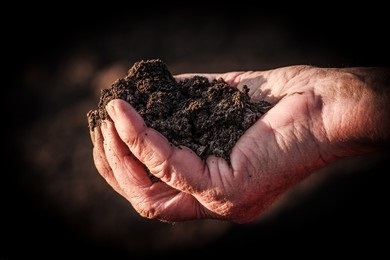
Soil is an important material basis for human society to survive. With the rapid economic development and accelerated industrialization, the soil is polluted to different degrees, including organic pollution and heavy metal pollution, which not only affects the surrounding environment but also affects human health through the food chain.
Soil remediation is the use of physical, chemical, and biological methods to transfer, absorb, degrade and transform pollutants in the soil to reduce their concentration to acceptable levels, or to convert toxic and harmful pollutants into harmless substances.
Lifeasible offers contaminated soil remediation services to help our clients design remediation plans and conduct soil remediation project experiments using in situ remediation and ex-situ remediation techniques so that you get the most accurate soil remediation analysis results.
Some of the technical approaches used in soil remediation
| Techniques | Objects | Type | Details |
| S/S (solidification/stabilization) | Inorganic, organic contaminants | In-situ/Ex-situ | Lifeasible mixes S/S materials with contaminated soil to physically or chemically immobilize the contaminants in the soil, or to transform them into chemically inactive forms, thereby preventing them from migrating or spreading in the soil environment. |
| Thermal desorption | Volatile, semi-volatile contaminants | In-situ/Ex-situ | Lifeasible heats the soil by direct or indirect heat exchange to a temperature sufficient to volatilize or separate the contaminants from the soil and ultimately into the gas/liquid treatment system.
|
| SVE/MPE (soil vapor extraction/ multi-phase extraction) | Volatile, semi-volatile organic compounds | In-situ | Phase separation and processing after extraction by vacuum or pump. |
| Cement kiln co-disposal | Organic and inorganic pollutants | Ex-situ | The method has a limited value for the maximum allowable input of heavy metals into the kiln soil. |
| Electric remediation | Heavy metal ions, organic pollutants | In-situ | Lifeasible inserts electrodes into the contaminated soil and the electrodes are connected to a DC (direct current) power supply at both ends to form an electric field. The contaminants are enriched at both ends of the electrodes by the electric field, and finally collected and treated using ion exchange and extraction methods. |
| Chemical oxidation | Difficult to biodegrade organic matter | In-situ/Ex-situ | Lifeasible uses oxidants to oxidize contaminants in the soil, thereby converting them into less toxic, less mobile products. |
| Chemical reduction | Uranium, technetium, chromate, and chlorinated reagent | In-situ | Lifeasible builds permeable reaction technologies that allow contaminants to be reduced or immobilized with the flow. Commonly used reducing agents are SO2, H2S gas, and Fe0 colloids, etc. |
| Chemically drenched | Organic-inorganic contaminants | In-situ/Ex-situ | The method has requirements for soil texture. |
| Phytoremediation | Some heavy metals and organic matter | In-situ | The remediation of heavy metals by plants can be divided into four ways, phytostabilization, phytovolatilization, phytoextraction, and rhizofiltration. |
| Biopile | Biodegradable organic matter | In-situ | This microbial remediation technology is less expensive, efficient, does not produce secondary pollution, and is suitable for treating easily biodegradable organic matter such as petroleum hydrocarbons. |
| Bio-ventilation | Biodegradable organic matter | In-situ | This method relies on the aerobic activity of microorganisms to promote the degradation of pollutants. |
Lifeasible often uses a combination of two or more remediation methods to achieve more efficient treatment of a soil sample contaminated with different contaminants. For example, we use chemical oxidation - bioremediation to remediate PAHs (polycyclic aromatic hydrocarbons)-contaminated soils. If you are interested in these projects and need soil remediation research, please feel free to contact our staff to see how we can serve you.
Lifeasible has established a one-stop service platform for plants. In addition to obtaining customized solutions for plant genetic engineering, customers can also conduct follow-up analysis and research on plants through our analysis platform. The analytical services we provide include but are not limited to the following:
Get Latest Lifeasible News and Updates Directly to Your Inbox
Mechanism of Action of Plant Resistosome NRC4
May 20, 2025
Mechanisms Regulating Plant Chloroplast Biogenesis
April 15, 2025